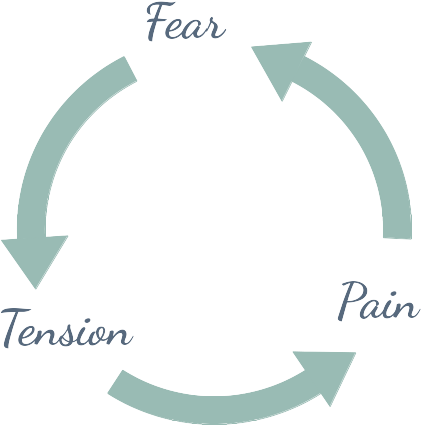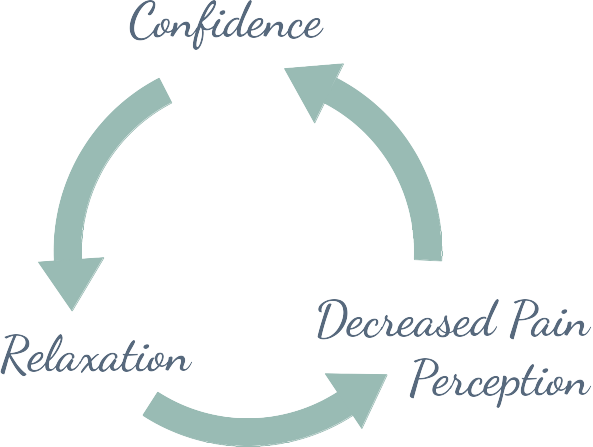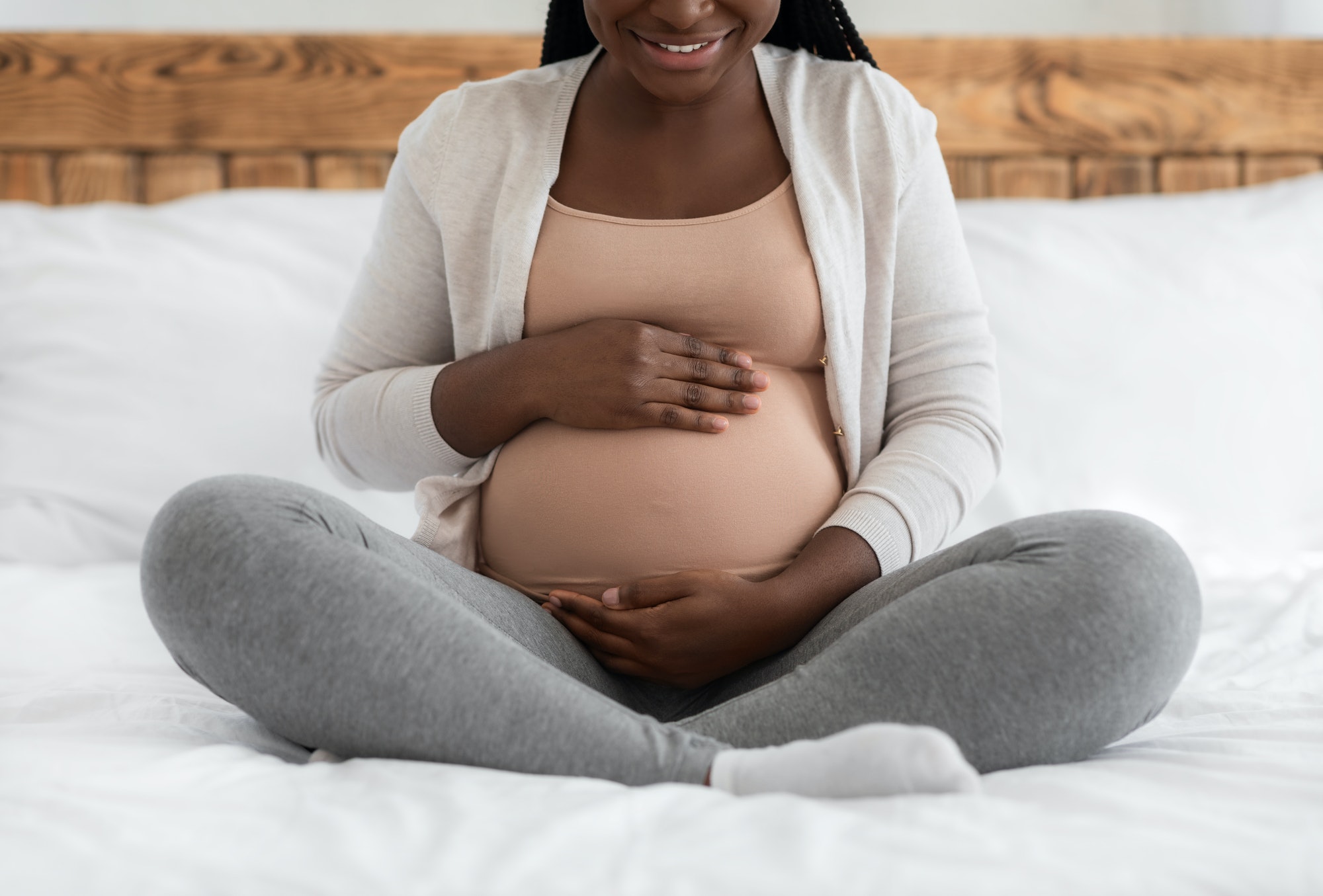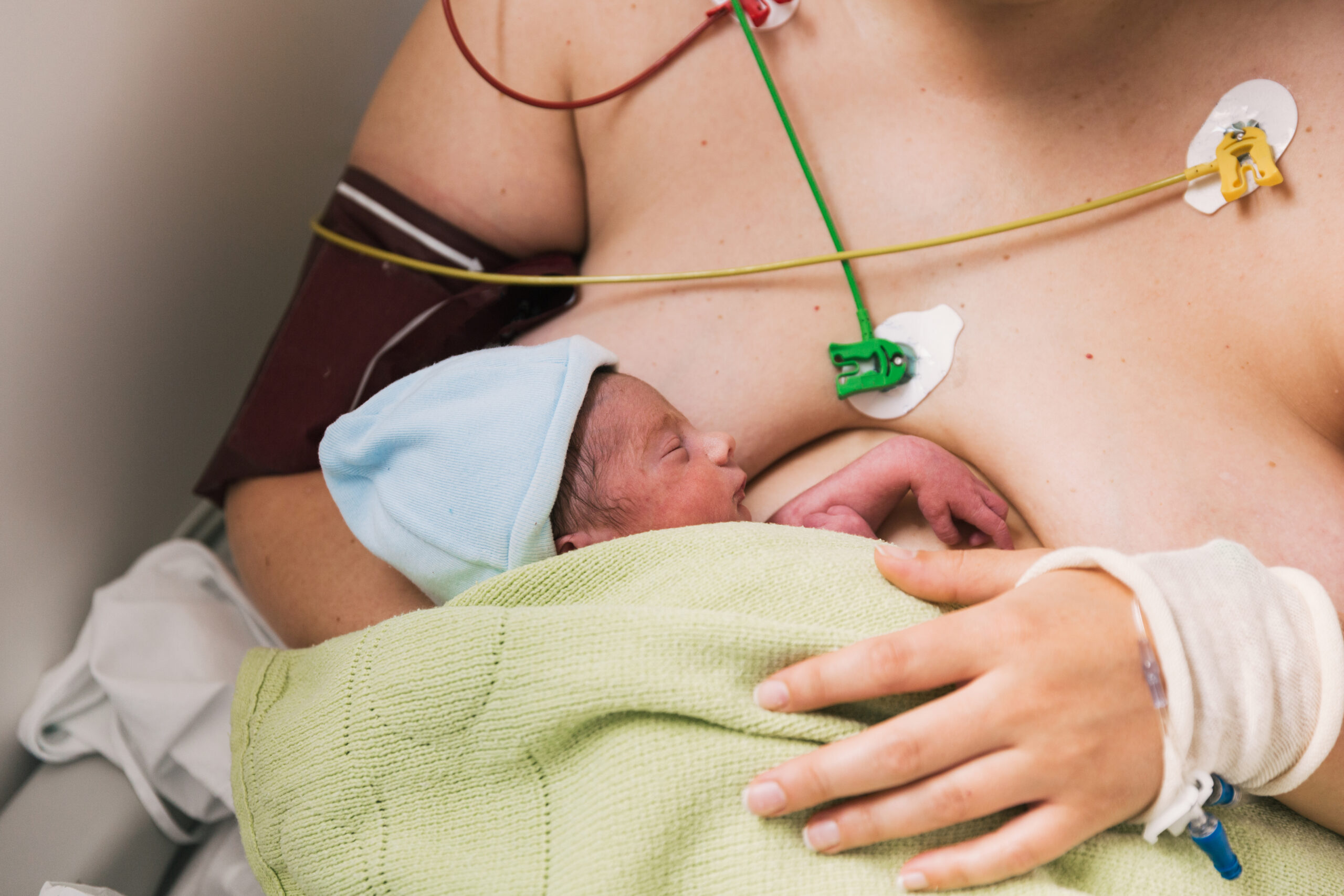Fear is a huge obstacle to overcome during pregnancy and once in labour there is nowhere to run! Of course we can’t dispel all fear, but deep-seated fears from misinformation and myths can be worked through and a new mindset with a different way of looking at birth and labour may alleviate fear.

The fear factor
In the western world, most of the births anyone has ever seen is on the telly (or big screen pre-Covid-19). We see labouring women being like monsters manifesting rage and anger at their partner or medical staff. They are totally out of control. At baby showers, there always seems to be that well-intentioned person sharing their horror story, or some remote person they know. Little, if anything, has ever been seen of a normal, physiological birth. There are incredibly moving videos on social media platforms of calm, peaceful, intimate and gentle births. No screaming, no exploding waters, no needles, with little or no intervention.
We see labouring women being like monsters manifesting rage and anger at their partner or medical staff.
Expectant mothers need to trust their bodies and their ability to reach inside themselves to birth their babies. A re-programming may be needed. Help is available through doulas, childbirth education classes, positive birth stories, books and other resources.
I’d like to share an exclusive extract from my new handbook ‘Support for the Supporter‘. It’s the section on Fear, entitled ‘The Fear Factor’.
What fear does to the mind and body
Think what your body does when it’s scared….Do your shoulders hunch up? What about your breathing – light and shallow? Your jaw – is it clenched or relaxed? Where else do you feel that tension? How do you feel about giving birth? Some of the words and phrases I’ve heard used are ‘nervous’, ‘unsure’, ‘scared of the pain’, ‘worried of losing control’. Do you think these thoughts and feelings will help or hinder birth?
Let’s have a look at this cycle: When there’s an increase in fear, our nervous system is flooded with adrenalin and our body is put into the Fight, Flight or Freeze mode. The body tenses up (e.g. jaw, tummy, bottom, shoulders), and oxygen is diverted from the vital organs to the areas of tension where it can run away, fight the threat or just be overcome. This is taxing and tiring to the body. Because of all these reactions to fear, our body feels even more pain, so we tense up and become more fearful, and so the cycle deepens.
The pain of labour cannot be compared to the pain of tooth extraction without an anaesthetic. Nor should it be said that labour is like pushing a watermelon out of an opening the size of a lemon. A woman’s body has been designed to give birth. Hormones play an integral part in preparing the body to birth by ripening and softening the cervix.

When there’s an increase in fear, our nervous system is flooded with adrenalin and our body is put into the Fight, Flight or Freeze mode.
Our mind toward the pain experiences is crucial too. We can tense up and fight the pain, or we can yield to the surges and ride the wave, surrendering and going with the flow. The pain of labour has a purpose. With an un-medicated labour, the surges build up in intensity, and last no longer than 60-90 seconds before there is a complete break. This pain is normal and expected. However, in our western society, we hear horror stories from our friends who knew someone who knew someone else who…..
We are told we must take the drugs, any drugs offered to us during labour as we will never cope! And then we have Hollywood. Thank you Hollywood for portraying birth as dramatic, painful and horrific as possible!
The good news is the cycle can be broken!
To address the fear, we educate. To face the tension, we do a purposeful activity. This can be a visualisation, intentional breathing or moving the body. To manage the pain, we get supportive care, and that is from YOU!
With confidence from knowing what to expect and using relaxation techniques, the body uses less oxygen, so it doesn’t fatigue as quickly. There is more chance of endorphins and oxytocin being released through surges (contractions). These are hormones we want to encourage! This yielding and relaxing decreases the pain perception which helps the cervix dilate and soften.

With confidence from knowing what to expect and using relaxation techniques, the body uses less oxygen, so it doesn’t fatigue as quickly.



















